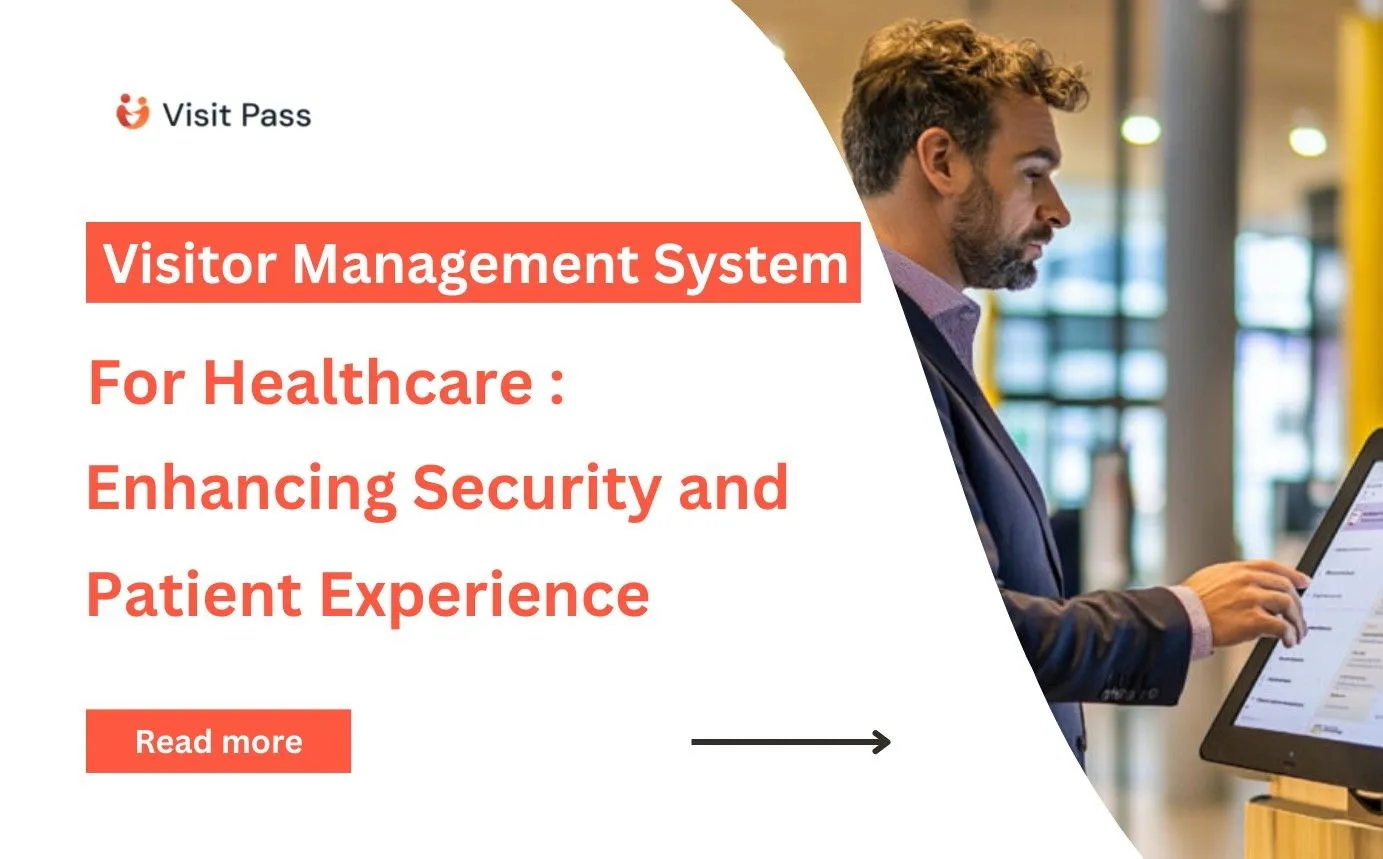Visitor Management System for Healthcare: Enhancing Security, Compliance, and Patient Experience
- 0 Comments
Why Visitor Management is Critical in Healthcare
In the health sector, the reception area is more than an arrival point it’s the initial line of defense for patient safety, data privacy, and experience.
As much as hospitals, clinics, and long-term care facilities spend money on medical technology, infection control, and regulatory compliance, many of them also ignore a significant physical weakness: visitor access management.
Without a safe, effective, and Healthcare Visitor Management System (VMS), and Regulatory Compliance are exposed to be unauthorized entry, compliance violations, and operational inefficiencies that can be affect both staff and patients.
This is where intelligent visitor management is no longer merely an administrative function but a central support of healthcare security, compliance, and patient confidence.
In this blog, we explore:
- 1. Who needs to prioritize visitor management in healthcare
- 2. When poor visitor tracking turns into a security or compliance risk
- 3. How modern VMS solutions enhance safety, efficiency, and patient experience
Challenges in Traditional Visitor Tracking
Traditional visitor sign-in sheets and manual registers might seem simple, but in healthcare, they open doors to serious risks:
- ✓ Security breaches – Anyone can gain access without proper screening.
- ✓ Compliance gaps – Paper logs don’t meet HIPAA, GDPR, or NABH requirements for data protection.
- ✓ Operational inefficiencies – Long queues at reception delay patient visits and disrupt workflows.
- ✓ Inaccurate visitor records – Handwritten logs can be illegible or falsified.
To understand how digital tools address these risks, check out How a Digital Visitor Management System Improves Hospital Security.

What is a Visitor Management System in Healthcare?
A Visitor Management System is a digital platform designed to track, verify, and manage visitors entering healthcare facilities.
Unlike generic VMS tools, a Healthcare VMS integrates with hospital information systems (HIS) and security access controls to meet the unique needs of medical environments.
It answers the Who, What, and Where:
- a) Who is entering? (Patients’ relatives, vendors, contractors, or delivery personnel)
- b) What is their purpose? (Visitation, meeting, maintenance)
- c) Where are they allowed to go? (Restricted or public zones)
Learn more about the operational benefits of healthcare visitor management and how it streamlines workflows.
Core Features of a Healthcare VMS
A high-quality hospital visitor tracking system goes beyond basic registration. Key features include:
- ✓ Digital check-ins via kiosks, mobile apps, or QR codes.
- ✓ Instant ID verification using OCR and document scanning.
- ✓ Visitor badge printing with time-based expiry.
- ✓ Watchlist and blacklist screening for high-security areas.
- ✓ Real-time visitor logs for emergency evacuations.
- ✓ Integration with CCTV, access control, and HIS.
- ✓ Touchless check-in to reduce infection risk.
Benefits of Implementing VMS in Hospitals & Clinics
A Healthcare Visitor Management System brings multiple layers of value:
- 1. Enhanced Security – Stops unauthorized individuals from reaching patient care zones.
- 2. Regulatory Compliance – Maintains accurate visitor logs to satisfy HIPAA, GDPR, and local laws.
- 3. Improved Patient Experience – Shorter check-in times and hassle-free processes for families.
- 4. Operational Efficiency – Automates visitor handling, freeing up staff for critical patient care.
- 5. Emergency Preparedness – Real-time visitor lists help during evacuations or lockdowns.
To explore the legal and privacy aspects, read Healthcare Visitor Management and Regulatory Compliance.
Compliance & Data Privacy
A healthcare VMS must be designed to strictly uphold patient privacy and regulatory requirements. In the U.S., systems should meet HIPAA guidelines, while in Europe, they must follow GDPR.
In India, hospitals should adhere to the NABH standards and also data protection laws.
Key compliance capabilities include:
- ✓ Encrypted visitor data storage.
- ✓ Role-based access to visitor records.
- ✓ Automatic log deletion after retention periods.
- ✓Secure cloud hosting with multi-factor authentication.
Use Cases Across Healthcare Environments
A Visitor Management System for Healthcare adapts to multiple environments:
- 1. Hospitals – Manage patient visitors, vendor deliveries, and specialist appointments.
- 2. Clinics – Ensure secure access while keeping patient wait times low.
- 3. Laboratories – Protect sensitive research and testing areas.
- 4. Senior Care Facilities – Safeguard residents while maintaining friendly visitation processes.
How Pixl.ai’s VMS Fits Healthcare Needs
Pixl.ai provides a tailored Healthcare Visitor Management System built for security, compliance, and simplicity of use.
With ID verification through AI, touchless check-in, and HIPAA-compliant data management, our VMS keeps hospitals and clinics secure, efficient, and welcoming.It seamlessly integrates into hospital systems to cause little disruption and lots of impact.
The Future of Healthcare Visitor Management System
As healthcare establishments become more intelligent and interconnected, visitor management is transformed from a mere logbook to a strategic safety and regulatory tool. Use Cases of Visitor Management System Across Healthcare Industries does not only monitor individuals; it creates trust, ensures patients’ safety, and keeps hospitals working efficiently.
If your healthcare facility is ready to elevate security, ensure compliance, and improve visitor experiences, Pixl.ai’s Healthcare VMS is your next step toward a future-proof, patient-first environment.


